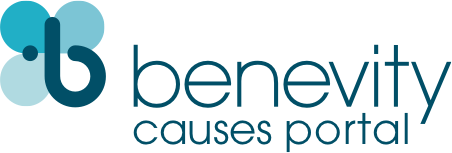NATIONAL MINORITY AIDS COUNCIL DBA AIDS PROGRAMS OF THE NATIONAL
This organization has already been registered
Someone in your organization has already registered and setup an account. would you like to join their team?Profile owner : r***k@n**c.o*g
Mission Statement
NMAC leads with race to urgently fight for health equity and racial justice to end the HIV epidemic in America. NMAC represents over 3,000 community- and faith-based organizations nationwide. The agency advances its mission by providing minority and minority-serving faith and community-based organizations a variety of capacity building assistance programs, online and classroom-based trainings, printed and electronic resources, grassroots organization and political advocacy. These activities help these agencies deliver HIV/AIDS services more efficiently and effectively, ultimately helping to mitigate the impact of HIV/AIDS in under served and marginalized communities.
About This Cause
Since AIDS symptoms were first described in June 1981 in the Morbidity and Mortality Weekly Report, AIDS has disproportionately affected minorities. A nurse named Joan Vileno, of Montifore, a health care facility in the Bronx, New York, recounted in Jane Gross' New York Times article, “The State of AIDS, 25 Years After the First, Quiet Mentions; The Nurse,” that the majority of her patients in the early 1980s were minority heterosexual IDUs (injecting drug users). Many delayed seeking medical care due to AIDS' close association with homosexuality. All of her patients died, many of them estranged from their families. Leaders of prominent minority AIDS organization nationwide – including Paul Kawata, Gil Gerald, Calu Lester, Don Edwards, Timm Offutt, Norm Nickens, Craig Harris, Carl Bean, Suki Ports, Marie St.-Cyr and Sandra McDonald – started the National Minority AIDS Council (NMAC) in response to the American Public Health Association (APHA) decision to not invite anyone of color to participate on the panel of its first ever AIDS workshop, at its 1986 association meeting. Harris, an African-American gay man living with AIDS, announced the formation of NMAC during that panel discussion after he rushed the stage, shouting "I WILL BE HEARD" and took the microphone away from Dr. Merv Silverman, then the San Francisco Health Commissioner. NMAC then set about building awareness of the impact of HIV in communities of color. It met with U.S. Surgeon General C. Everett Koop while he was writing his historic report about AIDS. Originally scheduled for just 15 minutes, Koop, who had not known about the disproportionate impact of HIV/AIDS among minorities, sat riveted by NMAC's representatives for nearly two and half hours. The report would become the only publication, other than tax and census forms, to be mailed to every person in the United States. The agency incorporated in 1987, and later launched the groundbreaking social marketing campaign, “Live Long Sugar,” with Patti LaBelle, which alerted people of color living with HIV/ AIDS about the dangers of the common HIV co-infection, Pneumocystis carnii pneumonia (PNP). In 1989, NMAC partnered with the Centers for Disease Control and Prevention (CDC) to help build the capacity of small faith- and community-based organizations (F/CBOs) delivering HIV/ AIDS services in communities of color. This changed the mission of the agency from raising awareness of the impact of HIV/AIDS among minorities, to building leadership within communities to address the challenges of HIV/AIDS. In 1997, NMAC launched the United States Conference on AIDS, an annual meeting of the HIV community to share information, network, and learn about new techniques and approaches to reach local communities. Today, with more than 3,000 attendees each, year, USCA remains the largest annual HIV conference in the United States. In 2011, given an alignment of science and policy, NMAC changed its mission to developing leadership in communities of color to end the HIV/AIDS epidemic. Since 2011, NMAC has been working to advance the core priorities of ending the HIV/AIDS epidemic in America and reducing health disparities. While these are massive undertakings, the potential posed by the release of the White House National HIV/AIDS Strategy, passage of the Patient Protection and Affordable Care Act (ACA) and scientific evidence around treatment as prevention (TaSP) have made this vision attainable. NMAC’s leadership understands that while these developments hold great potential, the current political and fiscal environment poses serious challenges, both to the success of our movement at large and NMAC in particular. As the new tool of Pre-Exposure Prophylaxis (PrEP) became available, NMAC funded the Biomedical HIV Prevention Summit, a two-day annual conference focusing on the use of tools such as PrEP and Treatment as Prevention (TasP). The Summit regularly draws more than 1,000 attendees each year. Three decades after Vileno’s writings, HIV still disproportionately impacts communities of color. But NMAC continues to fight on minority communities’ behalf with a community-based response of public policy education programs, conferences, treatment and research programs initiatives, trainings, and electronic and printed resource materials.
